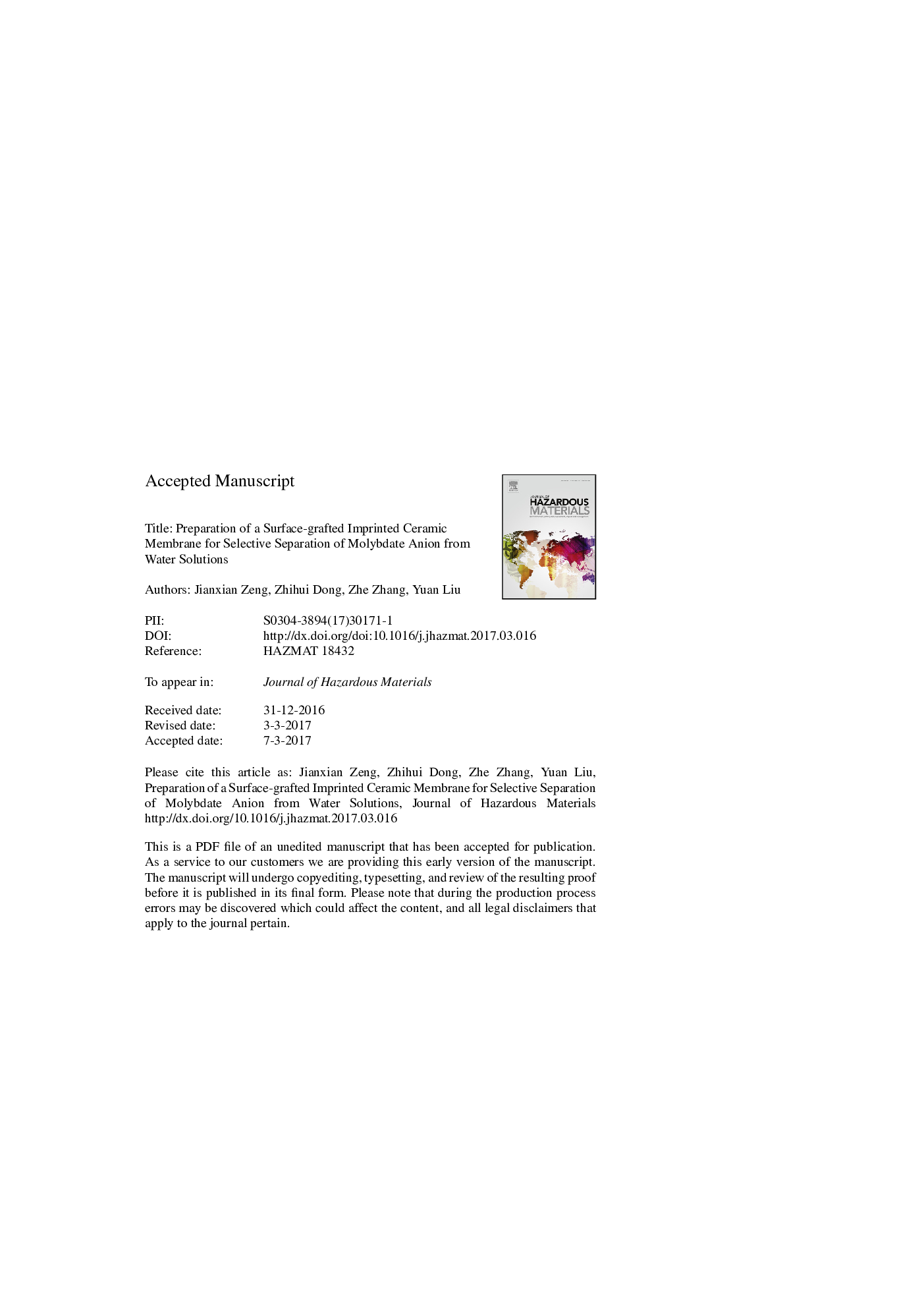| Article ID | Journal | Published Year | Pages | File Type |
|---|---|---|---|---|
| 4979438 | Journal of Hazardous Materials | 2017 | 29 Pages |
Abstract
A surface-grafted imprinted ceramic membrane (IIP-PVI/CM) for recognizing molybdate (Mo(VI)) anion was prepared by surface-initiated graft-polymerization. Firstly, raw alumina ceramic membrane (CM) was deposited with SiO2 active layer by situ hydrolysis deposition method. Subsequently, γ-methacryloxy propyl trimethoxyl silane (MPS) was used as a coupling agent to introduce double bonds onto the SiO2 layer (MPS-CM). Then, 1-vinylimidazole (VI) was employed as a functional monomer to graft-polymerization onto the MPS-CM (PVI-CM). During the graft-polymerization, the influence factors of grafting degree of PVI were investigated in detail. Under optimum conditions (monomer concentration 20 wt%, temperature 70 °C, initiator amount 1.1 wt% and reaction time 8 h), the grafting degree of 20.39 g/100 g was obtained. Further, Mo(VI) anion was used as a template to imprint in the PVI-CM by employing 1,6-dibromohexane as a cross-linking agent, and then Mo(VI) was removed, obtaining the IIP-PVI/CM with many imprinted cavities for Mo(VI). Thereafter, static adsorption and dynamic separation properties of IIP-PVI/CM for Mo(VI) were studied. Results indicate that IIP-PVI/CM shows a specific selectivity for Mo(VI) with the adsorption capacity of 0.69 mmol/100 g, and the selectivity coefficient of IIP-PVI/CM is 7.48 for molybdate to tungstate anions. During the dynamic separation, IIP-PVI/CM has also good selectivity for separation of Mo(VI) and W(VI) anions.
Related Topics
Physical Sciences and Engineering
Chemical Engineering
Chemical Health and Safety
Authors
Jianxian Zeng, Zhihui Dong, Zhe Zhang, Yuan Liu,
